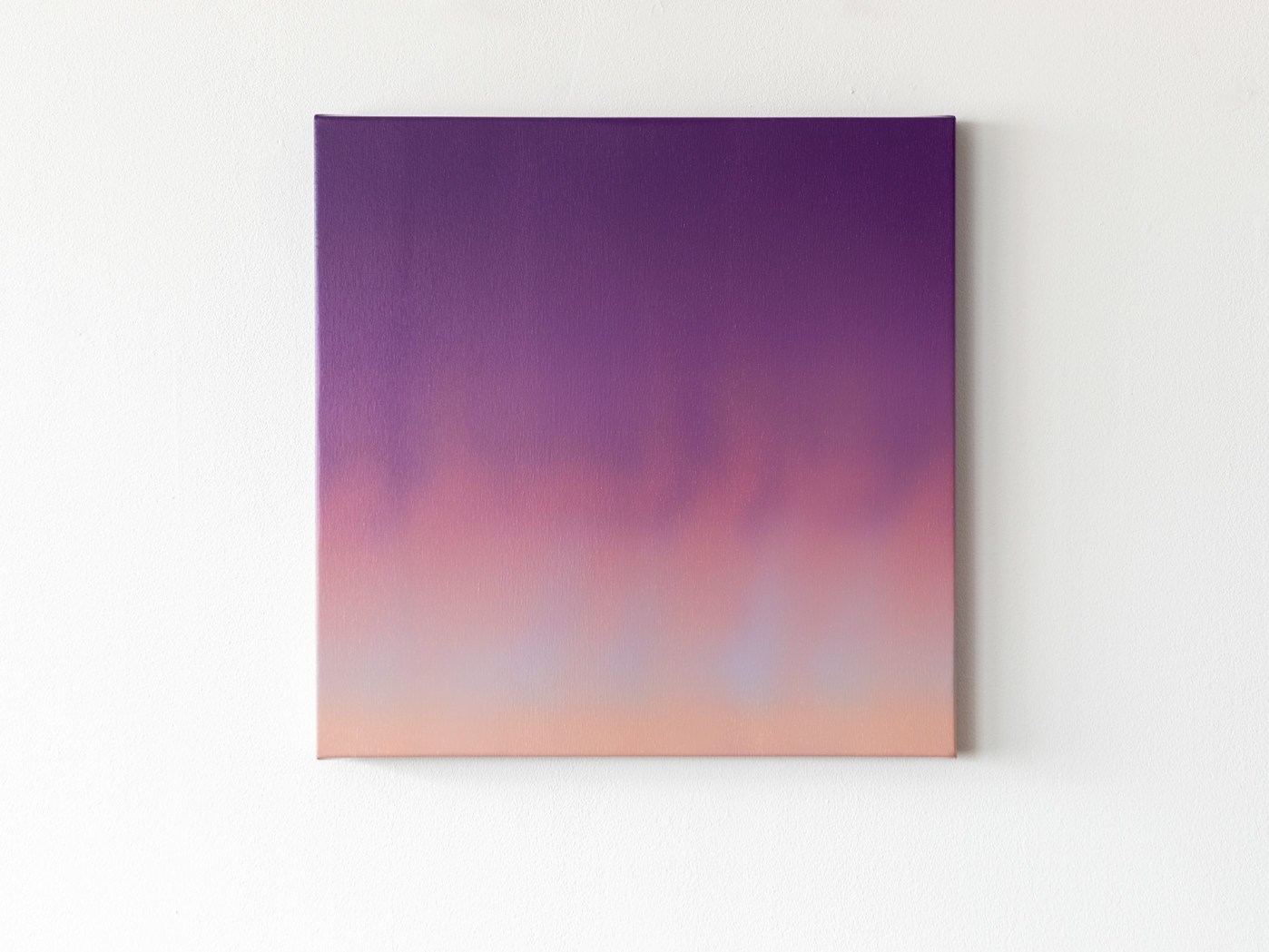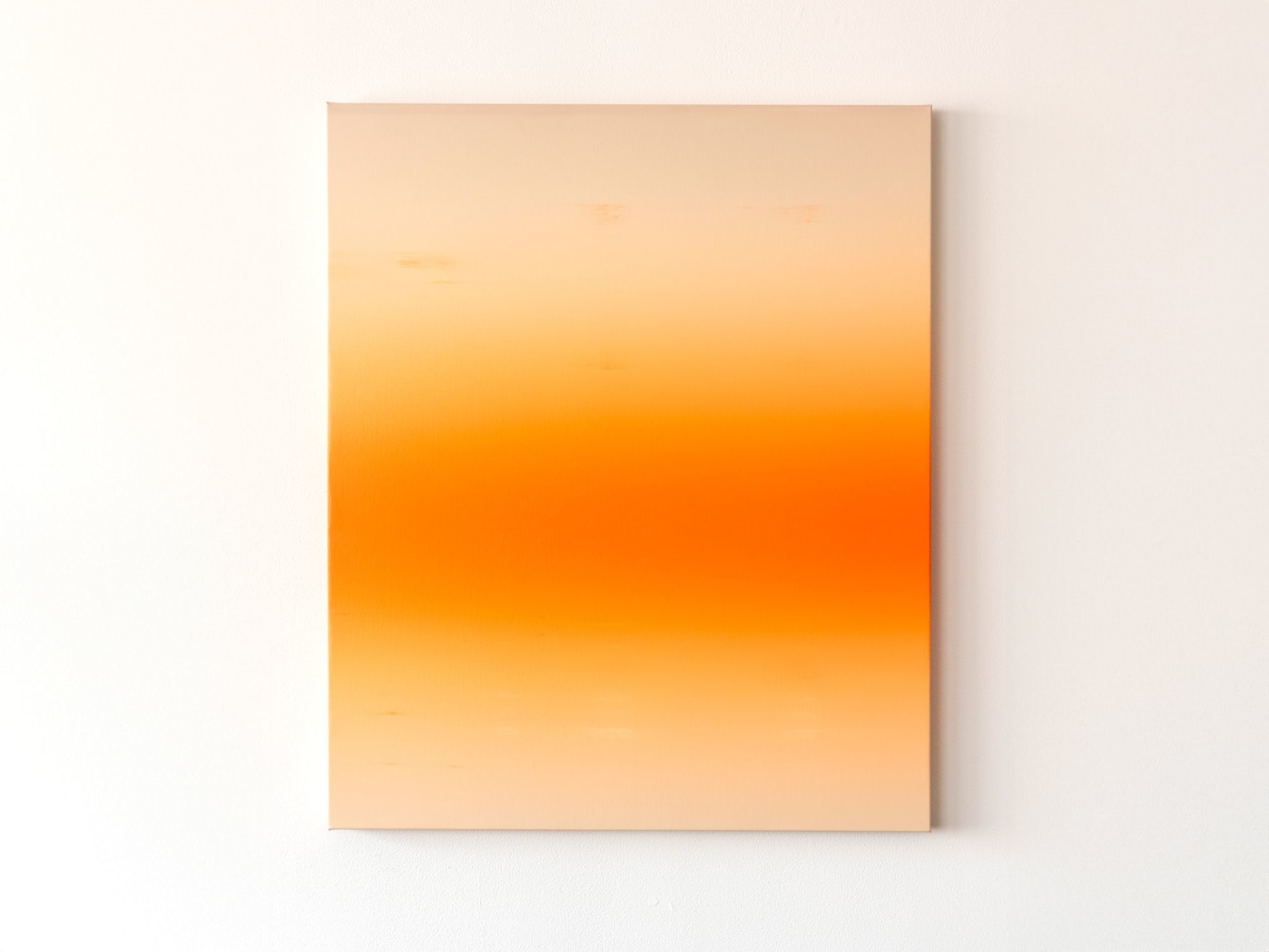04 july 2025, Martine Bontjes
The studio of… Donald Schenkel
Donald Schenkel doesn’t envision an idyllic studio with high ceilings, large windows and greenery all around. Instead, he has deliberately chosen a place filled with suspended ceilings, humming machinery and industrial energy in the Spaanse Polder. His studio is located on a large industrial estate on the outskirts of Rotterdam, surrounded by other makers. Schenkel prioritizes functionality and the proximity of suppliers to bring his paintings and sculptures to life.
In his paintings, Schenkel explores the tension between digital imagery and the still image. These ideas were sparked by a degree in Game Design, where he became fascinated by the infinite possibilities of digital fantasy worlds. At some point, he began to miss reality and came to understand that he might not be the only one with this realisation. In an era dominated by moving images on screens, Schenkel invites us to pause, look closely, and rediscover the power of the still image. Schenkel's works can be seen in the “Solid Light” exhibition at Root Gallery until 19 July, and then all summer by appointment. The gallery will reopen at the end of September.
Where is your studio, and how would you describe this place?
My studio is in the heart of the Spaanse Polder, one of the largest industrial areas in the Netherlands, just outside Rotterdam. It’s a shared building with around 25 different makers and a large communal space with saw machines and ceramic kilns. Unfortunately, no romantic studio with tall windows and ceilings in an old school building for me: I’m surrounded by suspended ceilings and sawdust from the workshop. And that’s exactly how I like it. My studio is a workplace in every sense, and I love that there’s so much industry around. Whatever you can imagine, there’s probably a company nearby that can supply it. Since I often build my own constructions and tools to paint with, it’s great to have so many suppliers close by. You might not expect that when you see the oil paintings, but I sometimes work on large scales or make wall sculptures from aluminum, glass or combinations of hardwood. Even for my regular painting process, I often build new tools.

Donald Schenkel, Mauve Clouds, 2024, Root Gallery
What does a typical workweek look like for you? Do you go to the studio every day?
My workweek is always irregular. Oil paint needs a long time to dry, easily two weeks, so when multiple works are drying in the studio, I often stay away for a while. At other times, especially while preparing for exhibitions or making (wall) sculptures, I spend long uninterrupted periods in the studio to finish everything. Then I hardly go home. The thinking and sketching happens in my workspace at home or in a comfy chair on Saturday mornings. That’s when I can disappear into articles or books and let new ideas and impressions filter into sketches and color compositions.
What materials are in your studio? Do you have a favorite tool you can’t work without?
That really depends on the project. I often use tools borrowed from industry or graphic techniques to paint my works. Since oil paint stays soft, you can keep blending it for a long time to achieve a perfect gradient. The tools I use help me knead the colors into each other for as long as needed. Because each object has to be painted in one go, I often build my own structures to paint sculptures like cubes or cylinders. Even certain painterly effects require a whole setup that I, along with an assistant, have to figure out how to use for painting.
Recently, I’ve started something new: reworking my layers of paint with squeegees, something I used to dread. Scraping breaks the perfect gradient. But now I use them to paint new color gradients across already painted ones. Mixing two gradients produces entirely new images. It’s still strange to build up a nearly perfect image and then break it. I paint everything wet-on-wet, so there’s no way to mix backward—only forward. Every movement of the squeegee over the wet canvas completely changes the image. It’s as if the painting is being refreshed again and again.

Donald Schenkel, Between past and future, 2024, Root Gallery
You originally studied Game Design. What drew you to that field, and why did you eventually switch to visual art?
Looking back, I think Game Design appealed to me because of the implicit infinity of the worlds created within games. I don’t just mean in terms of world-building or fantasy, but also in the technical sense. When you opened 3D software, the first thing you saw was an infinite digital space filled with nothing—and into that nothingness, you started building 3D models. That act of building in a void, with infinite space in the background, fascinated me deeply. In the end, though, I missed reality and a deeper sense of meaning in the work. That eventually drove me to art school, where an entirely new world opened up for me.
Can you imagine your work ever taking on an interactive or game-like dimension?
Good question, I really don’t know. It’s always possible. Not in the current work, I really enjoy making objects and paintings that make you, the viewer, pause for a moment. I offer a piece of contemplation and peace in a world of gamification and attention economy. If my paintings make you do nothing else for a moment but look and get lost in the color, then that’s a mission accomplished for me.

Donald Schenkel, Cobalt-Cerulean Light No.1, 2021, Root Gallery
In earlier years, you worked exclusively with blue. What drew you to that color, and are there other favorite colors you're working with now?
Blue is the color of the immaterial and the infinite, exactly what I found so interesting in the digital: its intangibility. The color blue has deep ties to the infinite and the celestial, both in art history and in our everyday experience. It matched the contemplative, almost meditative experience I wanted to capture with the gradients.
Blue was also an incredible training ground, because the color has so many nuances, from piercing ultramarine to introverted indigo to the airy clarity of cobalt. I had to understand how to paint the perfect gradient of infinity in blue before I could translate it into other color families.
Your style has become looser in recent years. What triggered that shift?
I’m always experimenting with different tools, and at some point I was working with small squeegees to paint gradients in ceramics. Because ceramic glazes are water-based and dry very quickly, I had to approach them differently. The gradients that came out of the kiln were far from perfect and had all kinds of quirks and forms in the glassy depths of the fired glaze. I became fascinated by the mystique of those shapes and wanted to translate that into oil paint. The looser style didn’t just disrupt the depth of the gradient—it also had the potential to enhance it. That led to a new, more painterly line of exploration. I wanted to find out how disrupting infinity could actually amplify that elusive sense of depth.

Donald Schenkel, The Deep of Orange, 2024, Root Gallery
Your painted gradients are so sharp they almost look like digital images. What fascinates you about the tension between a digital aesthetic and an analog technique?
In today’s visual culture, digital images are dominant. We perceive the entire world through screens. You can’t help but be fascinated by those digital images, and I find it thrilling that a physical medium can challenge that perception. Oil paint, of all things, a material that came into use around 1420 during the early Renaissance. There’s something anachronistic about using oil paint to create photographic effects on canvas and paper. There’s also a deeper question for me: we’re so used to seeing images through screens, I wonder whether we’re still capable of understanding a still image. Even a digital still is constantly being regenerated by technology. To me, that stands in stark contrast to a physical image, which is more like a memory of an action—a thinking person painting something for you.
Your latest series is described as a balance of chance, material and intuition. Can you describe a moment when everything came together—or completely fell apart?
Honestly, every painting *artist laughs from behind his laptop*. My work is more of a process ‘emergent’ where every painting, whether it succeeds or not, flows from the one before it. I often feel like I grow from one material and concept into another. It often happens that a particular effect or material suddenly fits perfectly with everything I’ve done before. Ideally, I’d like the entire body of work to function as one exhibition: a total process.
What are you currently most looking forward to? What projects are in progress?
The new series is still developing. A lot of unexpected things are happening in the painting process, but it’s clearly moving in a certain direction. I’m starting to get really excited about it—it feels like it’s about to transcend itself.

Donald Schenkel, The Optimist, 2024, Root Gallery
